OUR LAMB PRODUCTS
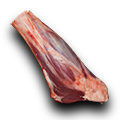 |
Forequarter Shank
When slow cooked the lamb shank is very flavoursome and tender.
The forequarter lamb shank is prepared from a forequarter and consists of the ulna, radius, carpus and distal portion of the humerus bones. The shank can be frenched if specified.
|
 |
Osso Bucco
A delicious winter favourite
Lamb Osso Bucco is prepared from a shank by slicing through the bone.
Sliced shin meat is best cooked using slow, moist cooking methods such as braising.
|
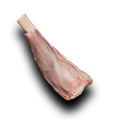 |
Hindquarter Shank
When slow cooked the lamb shank is very flavoursome and tender.
The hindquarter lamb shank is prepared from the leg and consists of the tibia, tarsus and calcaneal tuber bones. The heel muscle can be removed and the shank can be frenched if specified.
|
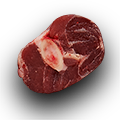 |
Osso Bucco
A delicious winter favourite
Lamb Osso Bucco is prepared from a shank by slicing through the bone.
Sliced shin meat is best cooked using slow, moist cooking methods such as braising.
|
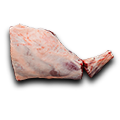 |
Leg Bone-In (chump off)
An ideal roasting cut
Lamb leg Chump Off is prepared from the Leg Chump On by removal of the Chump. The Shank is usually tipped near the shin meat on the Tibia.
The Lamb leg contains a layer of fat that protects it during cooking.Roasting with the bone in adds to the flavour and suculence of the meat.
|
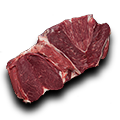 |
Butterflied Leg
Great on the BBQ, served medium rare
A Butterflied Lamb Leg is prepared from a Lamb Leg Shank Off. A butterflied leg of lamb is shaped liked its namesake after removal of all of the bones and opening of the muscle groups along the natural seams.
This cut is best seared on a barbeque and served medium rare.
|
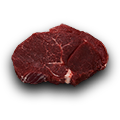 |
Leg Steaks
Flavoursome and tender
Lamb leg steaks are cut from a boneless leg and can consist of the various leg muscles comprising the Silverside, Knuckle, Topside and Rump.
Lamb Leg Boneless Steaks are suited for both dry and moist cooking methods including pan frying, grilling and barbecuing.
|
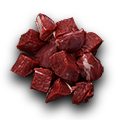 |
Leg Diced
Perfect in casseroles, curries and stews using moist, slow cooking methods
Lamb leg dice is prepared from a boneless leg and consists of the various leg muscles comprising the Silverside, Knuckle, Topside and Rump.
Lamb leg dice is used in widely in casseroles, curries and stews using moist, slow cooking methods.
|
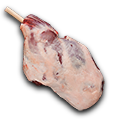 |
Easy Carve Leg
A delicious and tender roasting favourite
Lamb leg easy carve is prepared from a Lamb Leg Chump On, with bone removed. The femur is removed by tunnel boning and the topside is removed along the natural seam. The leg is then either netted or tied.
Lamb Leg Easy Carve retains the frenched shank bone, which is left in for presentation purposes.
|
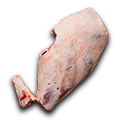 |
Leg Bone-In (chump on)
An ideal roasting cut
Lamb leg chump on, shank tipped is prepared from the leg chump on. The shank is tipped near the shin meat on the tibia.
The Lamb leg contains a layer of fat that protects it during cooking.Roasting with the bone in adds to the flavour and succulence of the meat.
|
 |
Rump
Renowned for tenderness and flavour
Lamb Rump is prepared from the chump . The cap muscle and subcutaneous fat are completely removed.
Lamb Rump is lean and tender and is best roasted. It can also be diced for casseroles or stir fry's.
|
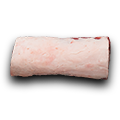 |
Shortloin
A tender, succulent roasting cut
Lamb shortloin is prepared from a loin after removal of the ribs. It consists of the muscles making up the striploin and tenderloin.
|
 |
Square Cut Rack
Best when roasted
The Lamb Rack is prepared from a Forequarter by removal of the breast and flap and by a straight vertical cut along the rib bone.
|
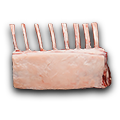 |
Frenched Rack
Flavoursome and tender
The Lamb Rack French trimmed is prepared from a Forequarter by removal of the breast and flap and by a straight vertical cut along the rib bone. The chine and feather bones are removed and then frenched by removing the intercostal muscles between the bones.
This cut is commonly crusted, pan seared and then roasted for a flavoursome and tender product.
|
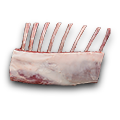 |
Frenched Rack, Cap Off
An excellent roast
The Lamb Rack French trimmed Cap Off is prepared from the Lamb Rack French trimmed by removal of the cap.
By removing the cap from a frenched rack the fat layer is removed. This cut is an excellent roast when crusted protecting the tender eye muscle.
|
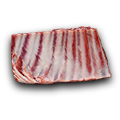 |
Rib Plate (Spare Ribs)
Tender, sweet and delicious
The rib plate is prepared from a side and consist of rib bones, intercostal muscles and overlaying fat and muscles.
The Spare Ribs or Rib Plate is taken from Ribset and consists of ribs and layers of muscle and fat. This cut is best roasted, pan fried or barbecued.
|
 |
Square Cut Shoulder (Bone In)
A great slow cooking cut
Square Cut shoulder of lamb is prepared from the forequarter with the neck, breast and flap removed.
The muscles of the shoulder do a significant amount of work on an animal and therefore contain more connective tissue and tend to be tougher than most other cuts. Best suited to slow cooking, simmering or roasting to soften the connective tissue.
|
 |
Banjo Cut Shoulder
Best suited to roasting
The Banjo Cut Shoulder is prepared from a Forequarter by removal of blade and rib bones with the humerus and shank retained. The remaining muscles are trimmed to an oval shape.
The Banjo Cut Shoulder is named due to its oval shape after removal of the scapular and ribs from the square cut shoulder. This cut is best suited to roasting.
|
 |
Easy Carve Shoulder
A tender roasting cut that is easy to slice after cooking
The Easy Carve Shoulder is prepared from the Forequarter. The shank bone is retained but the scapular and humerus bones are removed.
The Easy Carve shoulder produces a roast that is easy to slice after cooking. The shank bone is retained but the scapular and humerus bones are removed.
|
 |
Forequarter Chops
A versatile and succulent cut
Forequarter chops are prepared from the Forequarter and consist of the many muscles that make up the neck, shank and shoulder rack.
They are succulent and flavoursome due to the content of fat and connective tissue. These chops absorb marinade well and can be slow cooked or grilled.
|
 |
Frenched Shoulder Rack
Cooking with the bones in helps to impart more flavour
Lamb Forequarter (Shoulder) Rack is cut from the Forequarter with the Blade removed leaving the underlying muscle on the ribs.
Lamb Forequarter (shoulder) rack can be slightly tough and chewy and therefore is suited to moist, slowre cooking methods. Cooking with the bones in helps to impart more flavour.
|
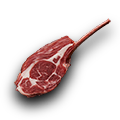 |
Frenched Shoulder Cutlet
Best slowed cooked to tenderise the meat, and release the flavour
Lamb Forequarter (Shoulder) cutlets are cut from the Forequarter rack.
Lamb Forequarter (shoulder) rack can be slightly tough and chewy and therefore is suited to moist, slowre cooking methods. Cooking with the bones in helps to impart more flavour.
|
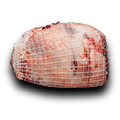 |
Boned and Rolled Shoulder
A tender and flavoursome option when cooked using low and slow methods
Lamb Shoulder boned and rolled is prepared from the Forequarter. All bones and connective tissue are removed and the cut is then rolled and netted or tied.
The muscles of the shoulder do a significant amount of work on an animal and therefore contain more connective tissue and tend to be tougher than most other cuts. Best suited to slow cooking, simmering or roasting to soften the connective tissue.
|
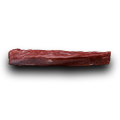 |
Tenderloin
A tender and delicate cut
Lamb Tenderloin is removed from the lumbar region of a side. It is usually prepared 'butt off' as this portion remains in the leg section during a traditional breakdown of a lamb carcass.
The Lamb Tenderloin does very little work on the animal and is therefore tender and delicate. Due to the lack of fat and connective tissue on this cut it is best cooked using high temperature methods such as grilling.
|
 |
Neck
Low and slow cooking delivers a delicious and tender result
Lamb neck is prepared from the carcass by a cut through the 3rd and 4th cervical vertebrae.
Lamb neck contains a significant amount of connective tissue that needs to be softened by slow, low temperature cooking methods. When melted during the cooking process the connective tissue imparts flavour.
|
 |
Eye of Shortloin (Backstrap)
An incredibly tender lamb cut
The Eye of Shortloin is removed from the shortloin section of the backstrap. Because this muscle does little work on the animal it is usually as tender as the tenderloin and therefore is best suited to high temperature cooking methods such as grilling or pan frying.
|
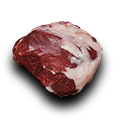 |
Topside
A great roasting cut
Lamb topside is prepared from a leg chump on by separating the primal along the natural seam. Excessive connective tissue and fat is removed.
Lamb Topsides can be roasted whole. They can also be sautéed quickly as strips or dice at high temperatures.
|
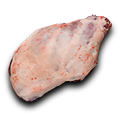 |
Leg (Tunnel Boned)
Quicker to cook, and easier to carve
A tunnel-boned leg is taken from the hindquarter with the rump and knuckle removed. All bones are then removed from the inside of the leg by a method known as tunnel boning.
A tunnel boned lamb leg can be stuffed with seasoning and is best cooked using dry methods such as roasting. Because the bones are removed this leg cooks more quickly and is easier to carve.
|
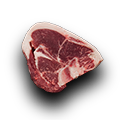 |
Loin Chops
Ideal for barbecuing or grilling
Lamb Loin Chops are prepared from the Shortloin and look like T-bone steaks. They are best grilled, barbecued or pan fried using high temperatures.
|
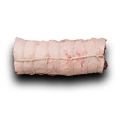 |
Boned & Rolled Loin (Noisette Log)
Quicker to cook & carve, with room to add stuffing
The Noisette Log is prepared from the Shortloin after removal of the bones. The fat layer is maintained and rolled around the muscle to form a log.
With the bone removed the lamb noisette log cooks more quickly than other roast cuts. Rolling the muscle in the fat layer prevents it from drying out.
|
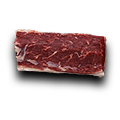 |
Striploin
A juicy & flavoursome roast option
The Striploin is prepared from the Shortloin after removal of bones, with he subcutaneous fat layer kept on. When cooked this fat layer adds to the flavour of the cut.
|
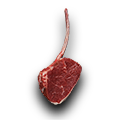 |
Frenched Loin Cutlet
Small, but full of flavour
Frenched loin cutlets are cut from a Frenched Loin Rack. They are made up of the eye of loin muscle, a rib bone and a fat cap.
Frenched Loi Cutlets are relatively small however they are full of flavour and very tender. Loin Cutlets are best pan fried, char grilled or barbecued.
During cooking the cap helps to lock in the moisture, and delivers a rich flavour to the meat.
|
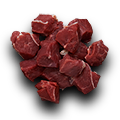 |
Shoulder Diced
Full of flavour, and wonderfully versatile
Lamb shoulder dice is cut from boneless shoulder and consist of the many muscles that make up the Forequarter.
Lamb Shoulder diced contains layers of fat, muscle and connective tissue and is therefore suited to moist, slow cook methods such as casserole, braising and stewing.
|
 |
Neck Chops
Best suited to slow cooking to produce tender, juicy meat
Lamb neck chops are sliced from a bone-in lamb neck.
Lamb Neck chops are full of flavour and are best suited to braising and stewing.
|
 |
Neck Fillet
Full of flavour and deliciously tender when cooked using low temperature cooking methods
Lamb Neck Fillet is prepared from a Forequarter by removal of the Oyster Blade, Shank, Breast and Flap. The Neck Fillet is boneless.
Lamb neck contains a significant amount of connective tissue that needs to be softened by slow, low temperature cooking methods. When melted during the cooking process the connective tissue imparts flavour.
|



